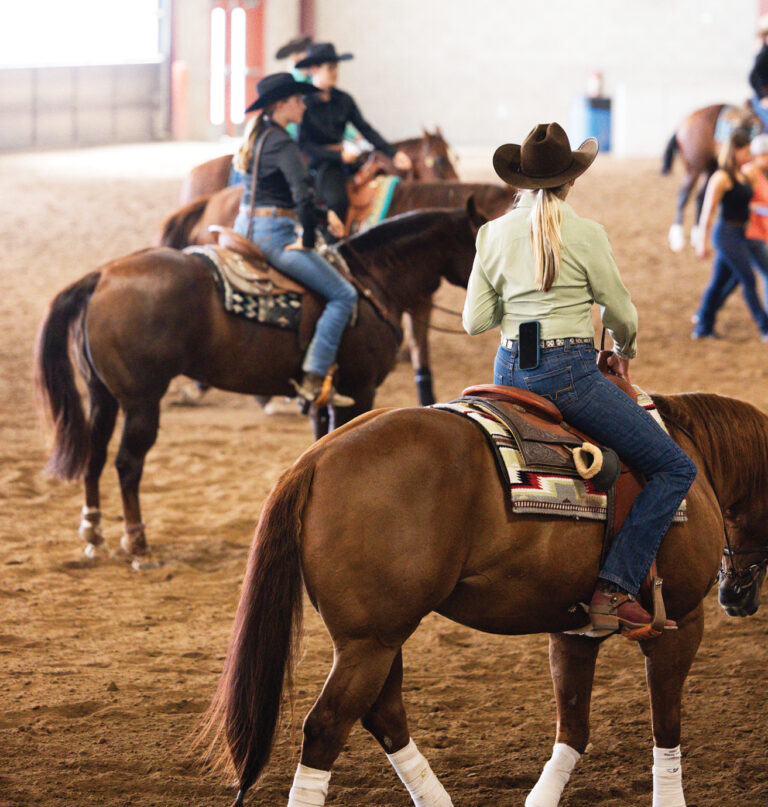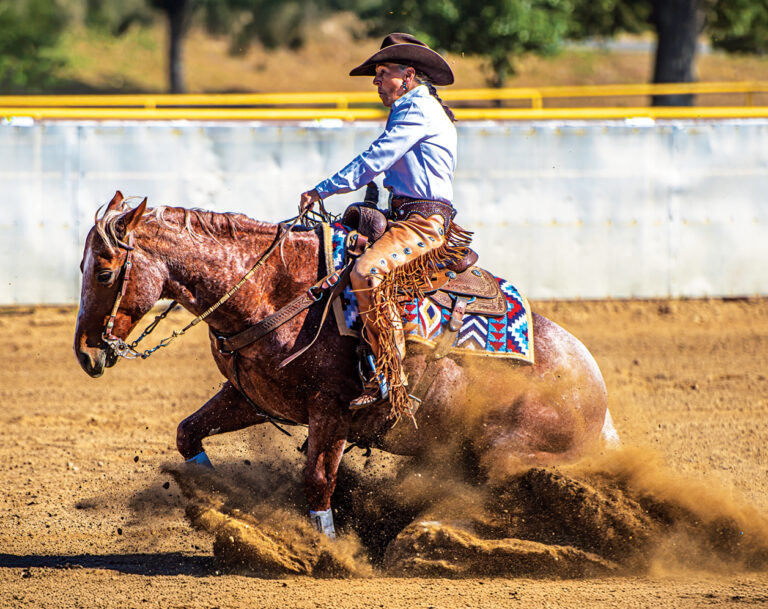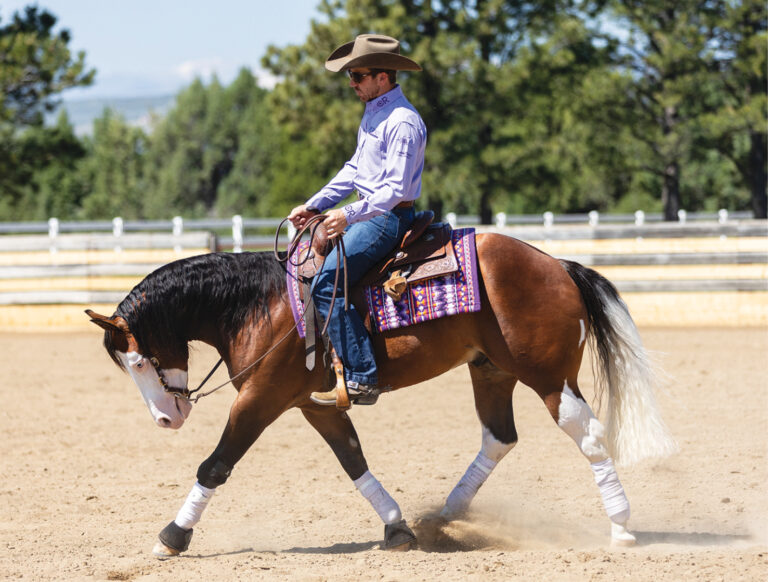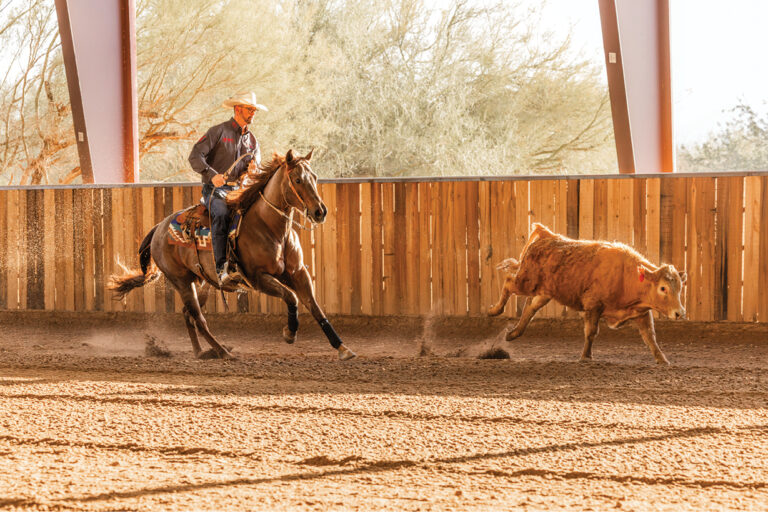Are you making the best use of your horse’s intelligence? You are if you’re using reward-based training methods.
In the April issue of Horse&Rider (on newsstands now), I shared the latest research on equine intelligence. “How Smart Is Your Horse” traced how attitudes toward horses’ cognitive and emotional abilities have evolved. Just 15 years ago, scientists were still questioning whether horses even experience emotions. Today, the results of many studies confirm that our four-legged friends have a lot more going on upstairs than we ever imagined.
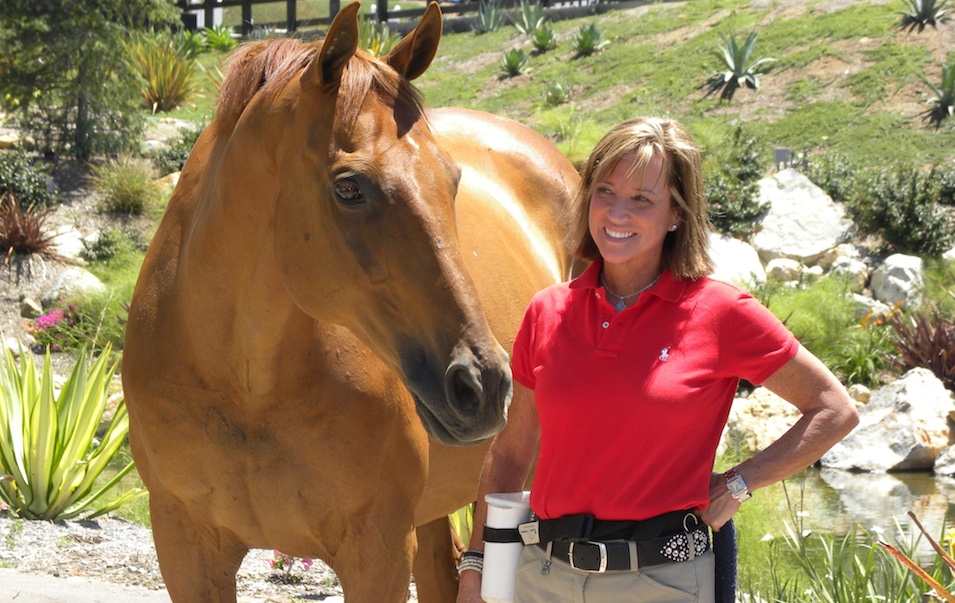
What does this mean for how we train and ride? Plenty.
“I think the training we’ve historically used with horses doesn’t often bring out their confidence or teach them to enjoy problem solving,” says clinician Shawna Karrasch of On Target Training/Connection Training. “There are exceptions, but by and large, I think we’ve mostly wanted horses not to do anything until we tell them to, then to respond immediately.”
This is a training system that works, as we know. But is there a drawback?
“This type of training tends not to engage the problem-solving part of your horse’s brain,” Shawna explains. “Thanks to advances in neurobiology, we’ve learned that training based in negative reinforcement tends to activate a different part of the brain than does reward-based training.”
A quick refresher on terms: Negative reinforcement is when you remove a stimulus—such as bit or leg pressure—the moment your horse responds. In other words, you reinforce his correct response by removing something he views as negative.
Reward-based training or positive reinforcement, by contrast, gives a horse something he wants—a treat, a rub, a rest—when he produces the desired behavior.
“Negative reinforcement tends to activate the part of the brain responsible for fight or flight,” says Shawna, “whereas reward-based training activates the part responsible for seeking things the horse wants. The chemicals and hormones—and subsequent emotions—involved are quite different in these two parts of the brain.”
That means the learning experiences are different, as well. Reward-based training maximizes your horse’s involvement and his desire to “succeed.”
“He becomes an active partner that’s invested in the outcomes of training,” explains Shawna.
In this way, the results of training are boosted to their greatest possible heights.
One of the best-known methods of positive reinforcement is clicker training, something Shawna helped popularize. She employed it first on marine mammals at California’s Sea World, then on horses, refining and expanding the technique to suit equine nature. A short video at Connection Training’s Web site explains how the method now uses communication to apply a science-based approach to training your horse.

Another strong proponent of clicker-style training is animal scientist and bestselling author Temple Grandin, PhD. She maintains that the beauty of a clicker system, which provides food treats on an intermittent basis, is that the horse comes to “anticipate the reward, which is even better” than just getting a treat each time.
H&R’s own Barb Crabbe, DVM, our consulting veterinarian and an advanced-level dressage competitor, also believes in reward-based training. She, like others, stresses that timing is critical, especially with food rewards, else you may inadvertently encourage bad behavior. The reward must come immediately after the desired behavior (which is what can make a clicker—which represents the reward–so handy).
“Food rewards are the most powerful,” says Barb, “especially when given intermittently—the horse keeps doing the good behavior hoping he’ll eventually get that unpredictable reward.”
Barb uses this knowledge with her new gelding, Galant.
“I race to his stall with a sugar cube the second he nickers at me when I walk into the barn,” she says with a smile.
To learn more, see the links below.
DETAILS ON REWARD-BASED TRAINING:
Reward your horse to improve his performance, attitude.

